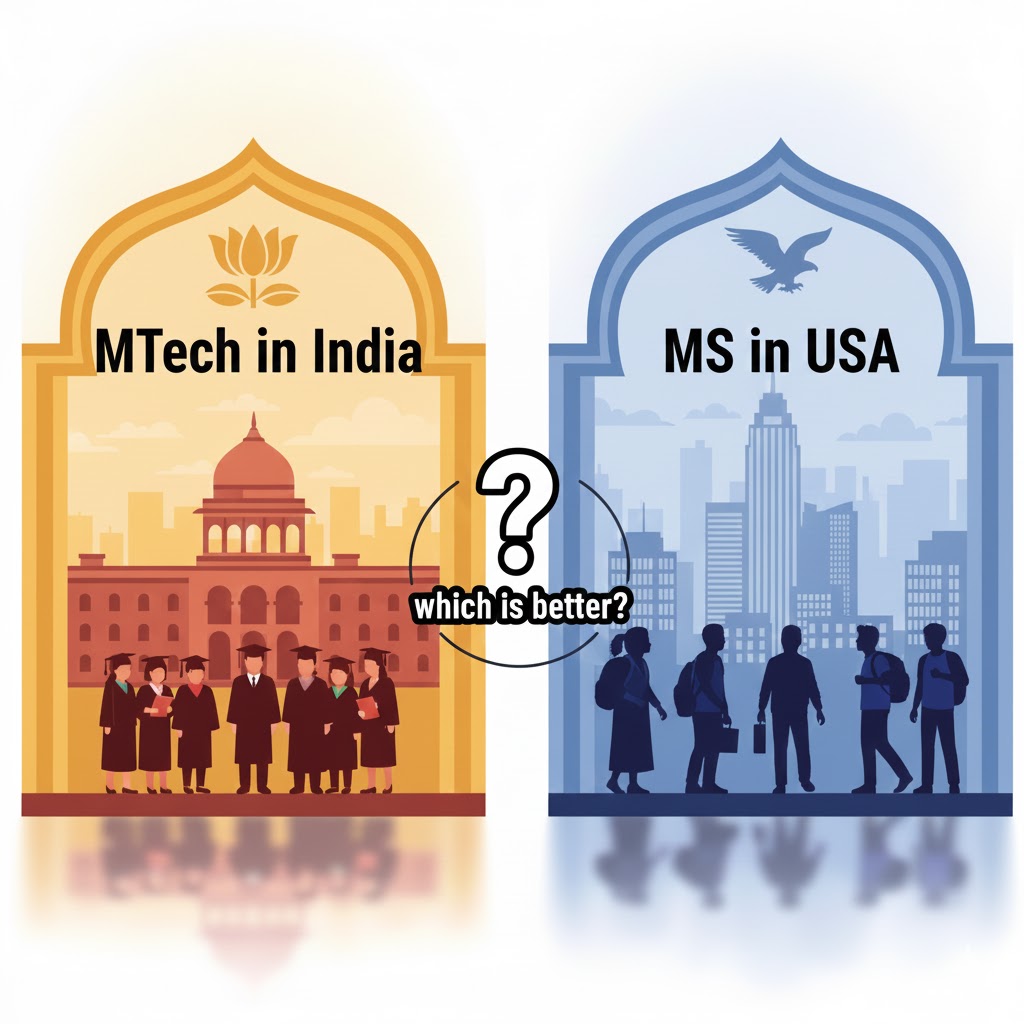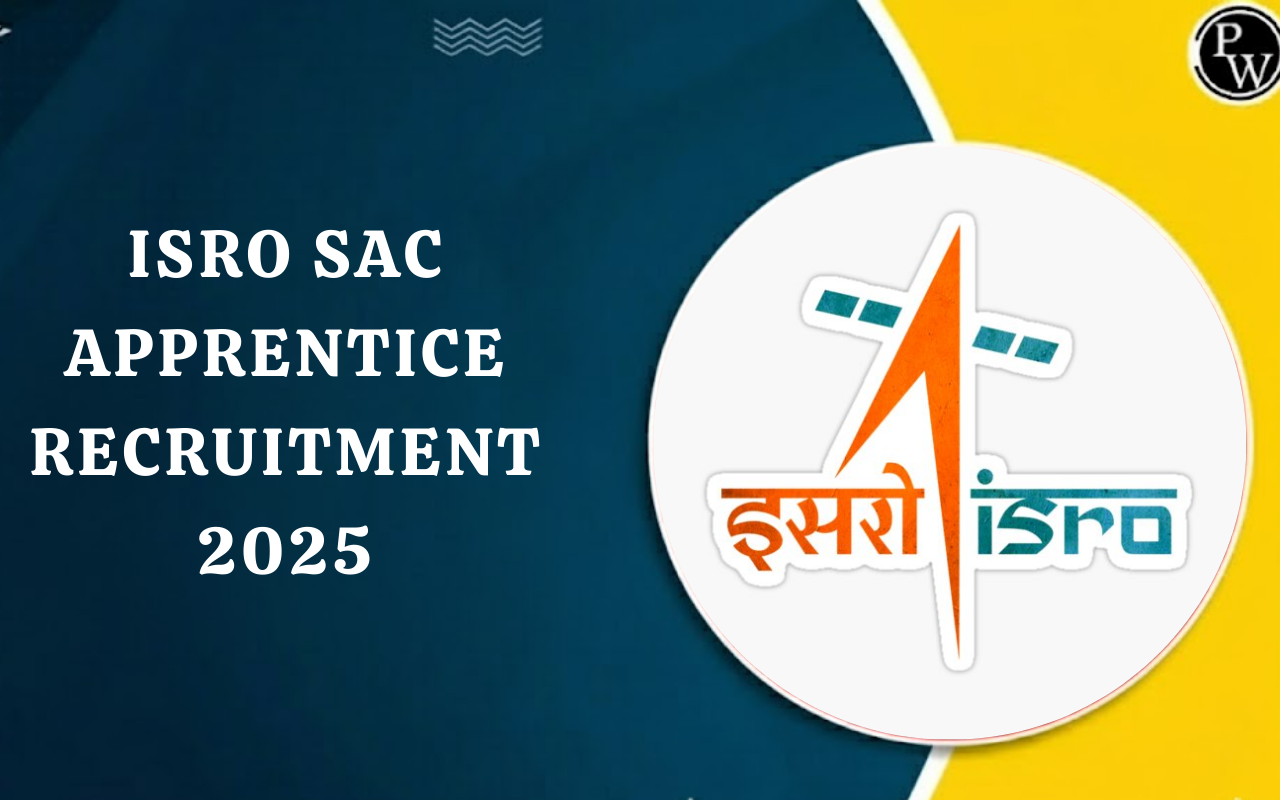
NPCIL vs BARC: For engineering graduates aiming to establish a career in India's nuclear sector, NPCIL (Nuclear Power Corporation of India Limited) and BARC (Bhabha Atomic Research Centre) present excellent opportunities. Both organizations possess unique strengths and specialized focus areas, making them an appealing career choice after passing the GATE examination. However, determining which one to go for can be a tough choice for applicants, as both of the PSUs offer attractive compensation and growth. Therefore, in order to help applicants make an informed decision, here’s a detailed comparison of NPCIL vs BARC. So keep reading.
Also check: SAIL vs GAIL
NPCIL vs BARC- Overview
Established in 1987, NPCIL is a mini-ratna Public Sector Undertaking (PSU) responsible for the design, construction, commissioning, and operation of nuclear power reactors. It operates under the Department of Atomic Energy (DAE) and plays a crucial role in India's nuclear power generation, contributing significantly to the nation's electricity supply. NPCIL's primary focus is on electricity generation through nuclear energy, ensuring the safe and efficient operation of nuclear power plants across the country. Founded in 1954 by Dr. Homi J. Bhabha, BARC is India's premier nuclear research facility, headquartered in Trombay, Mumbai. It serves as a multi-disciplinary research center with a focus on advanced research in nuclear science, engineering, and related fields. BARC's work extends beyond power generation to include nuclear reactor design, isotopes for medical and agricultural use, and various other scientific endeavors. It supports India's nuclear energy program and technological advancements through continuous innovation and research.Suggested read: IOCL vs ONGC
NPCIL vs BARC- Which is Good After GATE?
Going for either NPCIL or BARC after clearing the GATE exam can be a pivotal decision for engineering graduates aiming for a career in the nuclear sector. Both NPCIL and BARC offer compelling opportunities, but they differ from each other in many aspects. NPCIL focuses on the generation and maintenance of nuclear power, while BARC is more research-oriented, dealing with the development and advancement of nuclear technology. This article will compare the NPCIL vs BARC eligibility criteria, GATE cut-offs for recruitment, salary and perks, and career growth prospects to help interested applicants decide which organization best suits their career aspirations.Also check: ISRO vs DRDO
NPCIL vs BARC- Eligibility Criteria
By comparing the NPCIL vs BARC eligibility criteria, which are outlined below, applicants can determine which organization aligns best with their qualifications and career goals.| NPCIL vs BARC: Eligibility Criteria | ||
| Eligibility Criteria | NPCIL | BARC |
| Nationality | Indian | Indian |
| Academic Qualifications | Full-time BE/B.Tech/B.Sc Engineering (4 years duration) or 5-year Integrated M.Tech with a minimum of 60% aggregate marks | BE/B.Tech/B.Sc Engineering or 5-year Integrated M.Tech with a minimum of 60% aggregate marks in relevant disciplines |
| Age Limit | General: 26 years, OBC: 29 years, and SC/ST: 31 years Additional relaxations for dependents of 1984 riot victims, Jammu and Kashmir domiciled persons, and persons with disabilities | General: 26 years, OBC: 29 years, and SC/ST: 31 years Additional relaxations for dependents of 1984 riot victims, Jammu & Kashmir domiciled persons, and persons with disabilities |
| GATE Requirement | Valid GATE scores (from last 3 years) | Valid GATE scores (from last 3 years) |
| Final Year Students | Eligible if proof of eligibility and final marks are provided | Eligible if final mark sheet is submitted by the specified date |
NPCIL vs BARC: Job Roles and Responsibilities
When considering a career at NPCIL or BARC, it’s essential to understand the specific job roles and responsibilities associated with each organization. Both NPCIL and BARC offer distinct career paths, focusing on different aspects of nuclear technology and research. Here’s a comparison of the job roles and responsibilities of NPCIL vs BARC for GATE qualifiers.NPCIL Job Roles and Responsibilities
- Executive Trainee (ET): For Mechanical, Electrical, Chemical, Instrumentation, Electronics, and Civil Engineering Branches
- Undergo comprehensive training in various departments.
- Work on the operation, maintenance, and safety management of nuclear power plants.
- Assist in the design and commissioning of new nuclear projects.
- Implement safety protocols and regulatory compliance.
- Participate in project management and technical support.
- Scientific Officer: For Mechanical, Electrical, Chemical, Instrumentation, Electronics, and Civil Engineering Disciplines
- Conduct research and development activities.
- Develop new technologies and improve existing processes.
- Ensure the efficient and safe operation of nuclear reactors.
- Oversee technical projects and provide solutions to complex engineering problems.
- Maintain detailed records and documentation for compliance and reporting.
BARC Job Roles and Responsibilities
- Scientific Officer (OCES/DGFS): For Civil, Mechanical, Chemical, Electrical, Electronics, Computer Science, and Instrumentation Engineering Discipline Applicants
- Engage in advanced research and development in nuclear science and technology.
- Work on the design, development, and testing of nuclear reactors and associated technologies.
- Conduct experiments and analyze data to improve nuclear safety and efficiency.
- Develop new materials and methods for nuclear applications.
- Collaborate with interdisciplinary teams on various scientific projects.
- Engineer (Research and Development): For Civil, Mechanical, Chemical, Electrical, Electronics, Computer Science, and Instrumentation Engineering Branches
- Perform cutting-edge research in nuclear engineering and technology.
- Innovate and develop new technologies for nuclear power and related fields.
- Provide technical support and expertise for ongoing projects.
- Collaborate with other scientists and engineers to solve complex technical problems.
- Publish research findings and contribute to scientific knowledge in the field of nuclear technology.
Check: BHEL vs BEL
NPCIL vs BARC- Salary, Allowances and Perks
Understanding the salary structure and allowances offered by NPCIL and BARC is necessary for applicants seeking to join either of these PSUs. While both organizations provide competitive pay scales and a range of benefits, their compensation structures differ from each other. For the reference of applicants, here’s a concise comparison of the NPCIL vs BARC salary structure:| NPCIL vs BARC- Salary Structure | |
| NPCIL Salary Through GATE | BARC Salary Through GATE |
| During Scientific Officer/C Training Stipend: Rs. 35,000 per month Additional Benefits: One-time Book Allowance of Rs. 10,000 and mandatory lodging and boarding in NPCIL hostels. | During Training Stipend: Rs. 55,000 per month Additional Benefits: One-time Book Allowance of Rs. 18,000 |
| Scientific Officer/C On Appointment Basic Salary: Rs. 56,100 per month (Level 10 of the 7th CPC Pay Matrix) | Scientific Officer 'C' (SO/C) Basic Salary: Rs. 56,100 per month (Level 10 of the 7th CPC Pay Matrix) |
NPCIL vs BARC- Allowances and Perks
The additional perks offered to the employees at NPCIL vs BARC are outlined in the table for reference:| NPCIL vs BARC- Allowances and Perks | ||
| Allowance | NPCIL | BARC |
| Training Stipend | Rs. 35,000 per month + One-time Book Allowance of Rs. 10,000 | Rs. 55,000 per month + One-time Book Allowance of Rs. 18,000 |
| Dearness Allowance (DA) | 4% of the pay (as of 01.01.2017) | Included in monthly emoluments (approximately Rs. 1,05,000 with increments) |
| Leave Travel Concession (LTC) | Available as per rules, varies by place of posting | By air for the first eight years, then biennially |
| Medical Facilities | Comprehensive Contributory Health Service Scheme for employees and dependents | |
NPCIL vs BARC- GATE Cut Off
The GATE cut-off is the minimum mark required by applicants to qualify for the examination in their relevant disciplines. This cut-off is crucial, as it is used by organizations like NPCIL and BARC to shortlist applicants for further stages in their recruitment process. Understanding the GATE cut-off trends can help applicants set realistic expectations and prepare accordingly. Below are the previous year's GATE cut-offs for NPCIL vs BARC recruitments.| NPCIL GATE Cut Off 2022 | |||
| GATE Paper | Job Name | Category | Cutoff |
| Mechanical Engineering | Executive Trainee (Mechanical) | General | 801 |
| EWS | 745 | ||
| SC | 611 | ||
| ST | 571 | ||
| OBC | 732 | ||
| Civil Engineering | Executive Trainee (Civil) | General | 820 |
| EWS | 757 | ||
| SC | 648 | ||
| ST | 614 | ||
| OBC | 735 | ||
| Chemical Engineering | Executive Trainee (Chemical) | General | 708 |
| EWS | 601 | ||
| SC | 557 | ||
| ST | 498 | ||
| OBC | 649 | ||
| Electrical Engineering | Executive Trainee (Electrical) | General | 779 |
| EWS | 715 | ||
| SC | 600 | ||
| ST | 591 | ||
| OBC | 707 | ||
| Electronics and Communication Engineering | Executive Trainee (Electronics) | General | 847 |
| EWS | 714 | ||
| SC | 653 | ||
| ST | 607 | ||
| OBC | 768 | ||
| Instrumentation Engineering | Executive Trainee (Instrumentation) | General | 719 |
| SC | 477 | ||
| ST | 334 | ||
| OBC | 660 | ||
BARC GATE Cut Off
Check out the previous year's category-wise BARC recruitment through the GATE cut off for shortlisting applicants for interviews in the table below:| BARC GATE Cut Off for Scientific Officer (Group-A post of Government of India) | ||
| GATE Paper | Category | Cutoff |
| Chemistry (CY) | General | 775 |
| OBC | 775 | |
| SC | 775 | |
| ST | 775 | |
| EWS | 775 | |
| General (PwD) | 775 | |
| OBC (PwD) | 775 | |
| SC (PwD) | 775 | |
| ST (PwD) | 775 | |
| EWS (PwD) | 775 | |
| Civil Engineering (CE) | General | 855 |
| OBC | 855 | |
| SC | 855 | |
| ST | 855 | |
| EWS | 855 | |
| General (PwD) | 855 | |
| OBC (PwD) | 855 | |
| SC (PwD) | 855 | |
| ST (PwD) | 855 | |
| EWS (PwD) | 855 | |
| Chemical Engineering (CH) | General | 725 |
| OBC | 725 | |
| SC | 725 | |
| ST | 725 | |
| EWS | 725 | |
| General (PwD) | 725 | |
| OBC (PwD) | 725 | |
| SC (PwD) | 725 | |
| ST (PwD) | 725 | |
| EWS (PwD) | 725 | |
| Computer Science and Information Technology (CS) | General | 880 |
| OBC | 880 | |
| SC | 880 | |
| ST | 880 | |
| EWS | 880 | |
| General (PwD) | 880 | |
| OBC (PwD) | 880 | |
| SC (PwD) | 880 | |
| ST (PwD) | 880 | |
| EWS (PwD) | 880 | |
| Electronics and Communication Engineering (EC) | General | 840 |
| OBC | 840 | |
| SC | 840 | |
| ST | 840 | |
| EWS | 840 | |
| General (PwD) | 840 | |
| OBC (PwD) | 840 | |
| SC (PwD) | 840 | |
| ST (PwD) | 840 | |
| EWS (PwD) | 840 | |
| Electrical Engineering (EE) | General | 859 |
| OBC | 859 | |
| SC | 859 | |
| ST | 859 | |
| EWS | 859 | |
| General | 859 | |
| OBC | 859 | |
| SC | 859 | |
| ST | 859 | |
| EWS | 859 | |
| Mechanical Engineering (ME) | General | 830 |
| OBC | 830 | |
| SC | 830 | |
| ST | 830 | |
| EWS | 830 | |
| General (PwD) | 830 | |
| OBC (PwD) | 830 | |
| SC (PwD) | 830 | |
| ST (PwD) | 830 | |
| EWS (PwD) | 830 | |
| Instrumentation Engineering | General | 770 |
| OBC | 770 | |
| SC | 770 | |
| ST | 770 | |
| EWS | 770 | |
| General (PwD) | 770 | |
| OBC (PwD) | 770 | |
| SC (PwD) | 770 | |
| ST (PwD) | 770 | |
| EWS (PwD) | 770 | |
Read: GATE Cut Off for PSU Recruitments
NPCIL vs BARC- Career Growth
Choosing between NPCIL and BARC after qualifying the GATE exam can significantly impact one's career trajectory. Here’s a detailed comparison of career growth prospects in NPCIL vs BARC for GATE-qualified applicants, presented in the table below:| NPCIL vs BARC: Career Growth | ||
| Aspect | NPCIL | BARC |
| Initial Role | Executive Trainee | Scientific Officer (OCES/DGFS) |
| Post-Training Role | Scientific Officer/C | Placement in various departments focusing on nuclear research and advanced technology development |
| Promotions | Regular promotions based on performance, experience, and internal assessments | Regular promotions based on performance, experience, and contributions to research |
| Learning and Development | Regular training sessions, workshops, support for higher studies and certifications | Advanced training programs, support for higher education, involvement in cutting-edge research |
| Research Opportunities | Involvement in research and development projects | State-of-the-art research projects, national scientific missions, publications, and conferences |
| Job Security | Strong job security with comprehensive benefits as a government-owned corporation | Strong job security with comprehensive benefits as a premier research institution |
| Work-Life Balance | Generally stable work hours with a focus on safety and regulatory compliance | Intensive research environment with potential for international assignments |
NPCIL vs BARC- Which is Good After GATE? FAQs
Q. Which is the better option after GATE, NPCIL vs BARC?
Q. What is the difference between NPCIL and BARC?
Q. NPCIL vs BARC- Which is Good After GATE?









